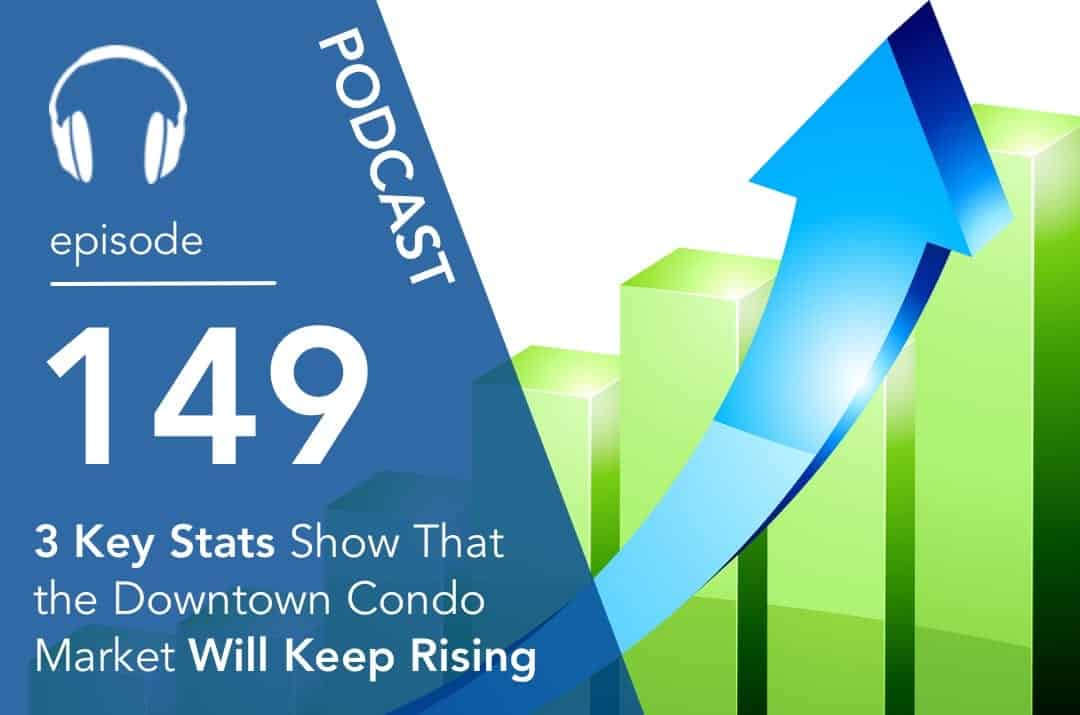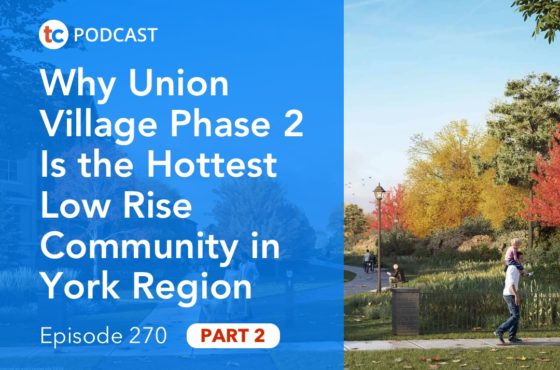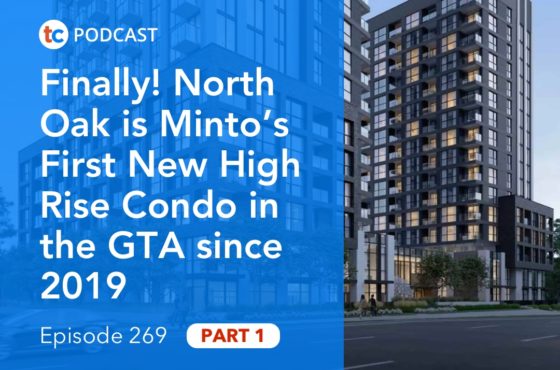3 Key Stats Show That the Downtown Condo Market Will Keep Rising

Since the introduction of the new foreign buyer tax in Ontario 2 months ago the headlines in the media have been about how the market is slowing, but what is actually going in the downtown condo market might surprise you. In this episode Andrew la Fleur shares 3 key stats from the latest TREB numbers that clearly show that the market is hot and prices will continue to rise in the months ahead.
EPISODE HIGHLIGHTS
1:15 Effects of these new changes to the market.
3:04 Investing in downtown condo market.
4:06 Statistics on Downtown Core, CO1 and CO8.
5:45 Stats for the number of sales for May.
8:30 Number properties for sale.
11:10 Sales to Listings Ratio.
18:22 Condo market stats for may 2017
Related Links
Click Here for Episode Transcript
Andrew la Fleur: In this episode, I want to share with you three stats that clearly show that the downtown Toronto condo market is going to continue to rise. Stay tuned.
Announcer: Welcome to the True Condos Podcast with Andrew la Fleur. The place to get the truth on the Toronto condo market and condo investing in Toronto.
Andrew la Fleur: Welcome back to the show and thank you for listening. Once again, it’s your host Andrew la Fleur, founder of truecondos.com, real estate sales representative with Re/Max Condos Plus and thank you for listening. Always glad to talk to you and to share some more great information with you about the downtown Toronto condo market in particular, but of course we look at Toronto real estate in general as well. We’re going to dive into, well really both fields. We’re going to talk about both today.
You look at the market as a whole, especially since the liberals, the win government has put in the new foreign-buyer tax and the other more minor changes to the real-estate market, which was at the end of April about six weeks ago now. At the time we’re recording this podcast, we’ve had about six weeks to sit and think and look at the effects of these new changes to the market. Many of the headlines have been basically saying things like “the market’s slowing down”, “there’s major changes and shifts in the market”, “buyers are scared”, “what happened in Vancouver, sort of, is now happening here”. This is sort of been the narrative, although it’s very early of course. It’s only been about six weeks. Really, really early to know what’s going on, and how these rules will have a long-term impact on the market.
That is sort of what the majority of the rhetoric has been in the mainstream media, and you might have seen some of these headlines floating around. The number of listings are up, and the number of sales are down, in a general sense, across the GTA for all types of properties. But if we dive just a little bit below the surface, you quickly notice there’s a big difference between the free-hold, the low-rise, the detached home, single family home market, and the condo market. It doesn’t take much looking at all to see that right away.
Some of the headlines have been reporting on this and making this known as well. Maybe not to the extent that it needs to be reported. But it is easy to see that the condo market really has been pretty much unaffected in an overall sense by the changes, versus the housing market has been moreso affected. Again, it’s only been six weeks. It’s very, very early on and hard to make any kind of conclusions about what’s happening, based on just a matter of weeks here that we’ve got.
But in today’s episode, of course, I want to focus on the downtown condo market, which is the primary market that we as condo investors are looking to invest in. The primary market where I always recommend my clients to invest, where I personally have most of my holdings and most of my portfolio in the downtown market. Again, not to say that you should never invest elsewhere. There are reasons to go elsewhere and to look at transit oriented developments in other areas of the GTA, not just the downtown core.
Downtown core, by the way, I’m referring to the traditional CO1 and CO8 MLS districts. If you’re familiar with those, which is basically south of Bloor Street to the lake, west of the Don Valley and east of sort of Dufferinish, Parkdale area. That’s sort of CO1. That’s sort of the downtown core which we’re talking about. And when we get into statistics here, that’s where the statistics I’m talking about are from, CO1 and CO8, which is the market that I most closely am tracking personally and with the podcast and articles I’ve written over the years. When I talk about the downtown condo market on the resale side, that’s what I’m referring to, is CO1 and CO8, which is how the Toronto Real Estate Board defines sort of the downtown of the city.
So, with that being said, like I said I want to get into what’s happening in the downtown condo market. Because really, you can talk about the condo market as a whole across the city, but it’s not as relevant to us as condo investors. You want to get as specific and as local as possible when you’re analyzing the market to understand what is happening in the market, and where the opportunities are. Let’s look at the three statistics I want to share with you.
Number one. Number one is that you look at … Again, the rhetoric in the headlines is the market is slowing down. Is that true? Basically, it’s completely untrue when you look at the downtown condo market. In fact, basically what I’m here to tell you in this episode is that all signs are pointing to prices continuing to rise in the downtown condo market. If you look at what’s happening in the numbers, all signs are pointing to prices continuing to rise. There’s certainly nothing indicating that that will change when you just look at the numbers.
So let’s look at those numbers. First one is the number of sales. The number of sales, if you look at it on paper for the month of May, the latest stats that we have, the month of May, the first full month since the institution of these new rules, the number of sales are actually down for the downtown condo market, slightly. Around 2%. Sales are actually down from May this year compared to May of 2016. They’re actually down about 2%. So if you just look at that on the surface you think, wow that’s not good. How can that be a positive indicator? Well look at the number of sales, the gross number. 801 condos were sold in the downtown in May of this year versus 818 last year. So again, you’re talking about almost the exact same number. 17 condos different were sold this year versus last year. It’s hardly even a rounding error, if you just look at it like that. Basically, the number of sales are pretty much flat.
But if you dig a little deeper, again, you look at how many condos typically sell in the month of May. Well if you look over the last, say five years, not even going back too far. But if you look at the average of the last five years, for the month of May, downtown, the number of condos sold, typically in the month of may is around 500. So typically over the last five years around 500. This year we had 800 condos, 801 condos to be exact sold. So that is up … What is that? That’s basically 60%. 60% higher than the five-year average. So the number of condos sold in May is 60% higher than the five-year average. Okay. 60% higher. That is a huge number, clearly. And again, May of last year was the all-time high by far, 818 in the month of May. This year 801. Again, second place is like around 550-600 condos, or third place I should say.
So we’re way beyond that. The number of condos sold are way above the typical number that we’ve seen selling downtown. Way above it. Not even close, so if you’re looking at the number of sales, and you’re saying well sales are down. Well sure. I mean they’re down, marginally 2%, almost nothing from a year ago. But you look at sales versus what they typically are in this time of year, they’re massively up. Sales are massively up. So that was the first number there.
Second number I want to look at is the number of listings. The supply. The number of properties available for sale. And for this, I’m talking about active listings. So if you look at the number of active listings, condos for sale downtown this year, you are sitting at about 975 condos. 975 condos. That number can give you some context versus last year. Last year there were active listings in May, 1,584. 1,584. One thousand, five hundred and eighty-four condos last year available for sale. This year there’s only 975 condos available for sale downtown, active listings.
So if you actually again, go back and look at it the last five years. The number of condos varies between about 1,519 and 1,900 for the month of May available active condos for sale. 1,500-1,900. This year we have 975. So again, you’re talking about roughly half. Roughly half the average number of units for sale compared to the last five years for this time of year. Way down. Supply is way down. Again, the classic line that everybody likes to say at cocktail parties, or you know when you go to the barbecues, your aunt asks you what’s going on in the market, you know, what’s going on with these condos? It’s, “They’re building too many condos. There’s so many condos downtown. Are these all full? Who’s living in these condos. There’s too many condos.” Again, all you need is just quote that one number. Look the number of condos available for sale is about half today of what it has been typically on average over the last 5-10 years. It’s half. There are half as many condos available for sale. Massive drop.
And again, if you look at how many condos are actually selling, the number of condos actually selling is about 60% higher than the typical number of condos that sell for this time of year over the last five years. So sales massively higher. Available listings massively lower than what we typically have seen over the last five years. That’s the second stat. So listings way down compared to our typical averages. Sales way up compared to our typical averages.
And the third stat is my favorite stat which combines these two things together, and it is the sales to listing ratio. Sales to listing ratio is really, as I’ve said many times over the years to people, if you look at only one stat to just get a gage of the market, look at sales to listings ratio to understand the temperature of the market. It’s a great, just a quick, let’s get the temperature of the market. Is it hot? Is it cold? Is it likely to go up? Is it likely to go down. This one stat will tell you more than anything else.
And again, typically for the downtown condo market over the last 5-10 years, through the hot times, the slow times, it’s typically around 40% is what we’re normally used to seeing for the downtown condo market. Around 40%, in a given month that means around 40% of all the active listings will sell. So if there’s 1,000 listings, 400 of them will sell typically. That’s sort of a rough number, around 40%. Once it starts creeping up, and it has occasionally over the last decade, above say 50% getting into 60% territory. Then we’re definitely in a strong seller’s market at that point.
So what is it today? Well today, due to the way that TREB gives us the numbers I can break it down from CO8 and CO1, so Downtown East and Downtown West. Downtown West, you’re looking at 77% is the sales to listing ratio today. 77%, which is massively into seller’s market territory. Again, the typical average that we’ve seen over the last 5-10 years for downtown that we’re used to, that has been normal, that has resulted in rising prices every year, has been about 40%. Downtown West is double that amount right now.
If you look at Downtown East, CO8, you’re looking at an unbelievable number of 96%. So 77% and 96%, clearly the downtown condo market is very, very strongly in seller’s market territory. If anybody’s telling you anything differently about what the market is or what it’s doing or the direction of the market or the temperature of the market, just give them that stat. That should shut them up pretty quick. Tell them, look, the average of the last 10 years is around 30%-40% according to Andrew la Fleur and the podcast that I listen to. Today that number, if you look at the downtown average combined the Downtown East and West, it’s around 80%-85%. So it’s double. It’s twice as high as what it typically is.
Again, if you just look at last year. Last year, we’re comparing to May of last year, Downtown West was 49%. Now today it’s 77%. Downtown East was 61%. Today it’s 96%. These numbers are massively higher than where they were last year, and we can all agree, a year ago if we were having this conversation, we would all agree that it was a strong market last year, and it was a seller’s market last year at this time. Now it’s even moreso. Much, much, moreso.
So yes, the headline you might see in the paper might say, “Sales are Down”. And if you look closely, sales are down 2% for downtown condos. Wow. Okay. But if you dig a little deeper like we’re doing here in this podcast, you actually see what’s going on. The market is red hot. It’s definitely a strong seller’s market. There is a massive shortage of inventory. If you’re a buyer out there, it’s very competitive to get a property still. One of my colleagues just was tweeting about their experience this week on a condo at Market Wharf. A one bedroom condo I believe it was at Market Wharf, which is right by Saint Lawrence Market, a popular building in the downtown. There were nine offers received on this condo, and it sold $100,000 over asking price. It sold for $1000 per square foot.
Again, if you’re a condo buyer today, and you’re buying pre-construction in a mid-market building at under $1000 a square foot. Four or five years from now when that building is built, it’s very likely going to be worth much, much more than that. Just look at what’s happening in resale today. $1000 per square foot for a downtown condo in a nice building in a nice area, nine offers, $100,000 over asking. This is the reality of the market today.
So if you’re having any notions that the market is slowing down, this and that. Sure, there are segments of the market that clearly are slowing down. You look at detached houses, which again have gone from let’s say a million bucks to you know 1.3 million in just a year, which is insane. That market is certainly slowing down right now. There’s more listings available. The number of sales are down. What’s happening here? People are being cautious. The market is responding. The market is naturally going back to more of a balanced state after a year of absolute frenzy. The market is just normalizing. It’s returning to a more normal state. As I’ve been saying for months and months and months on this podcast, don’t get used to prices increasing at 25%, 30%, 35%. Completely not normal, completely not a sustainable level of growth. And that’s exactly what we’re seeing right now in the market overall, is a more return to normalcy.
But if you are a condo investor, you’re wondering what’s happening in the condo market, and what’s likely to come. Again, looking at the downtown Toronto condo stats, which we’ve just done, clearly will show you that prices are going to continue to rise because it is clearly still a seller’s market. There’s clearly still not nearly enough condos available for sale to meet demand in order to reach an equilibrium where prices will level out in any way. Prices are going to continue to rise at a high pace, unless there’s some dramatically huge and new influx of supply, or some dramatic huge decrease in demand. And we’re not seeing either of those two things, and we’re not expecting either of those two things to happen anytime soon. So the condo market will continue to grow, and prices will continue to rise. And you heard it here on the True Condos Podcast.
Okay, I’ve gone on for quite a while here today on this topic. I hope you found this interesting. I hope you got some useful knowledge from today’s episode. And if you did, please go ahead and tell somebody where you heard it and share this episode on Twitter or Facebook, carrier pigeon, any method you can find to get the word out about this would be greatly appreciated. And until the next episode I hope you have a great week, and we will talk to you soon.
Announcer: Thanks for listening to the True Condos Podcast. Remember your positive reviews make a big difference to the show. To learn more about condo investing, become a True Condo subscriber by visiting truecondos.com.



